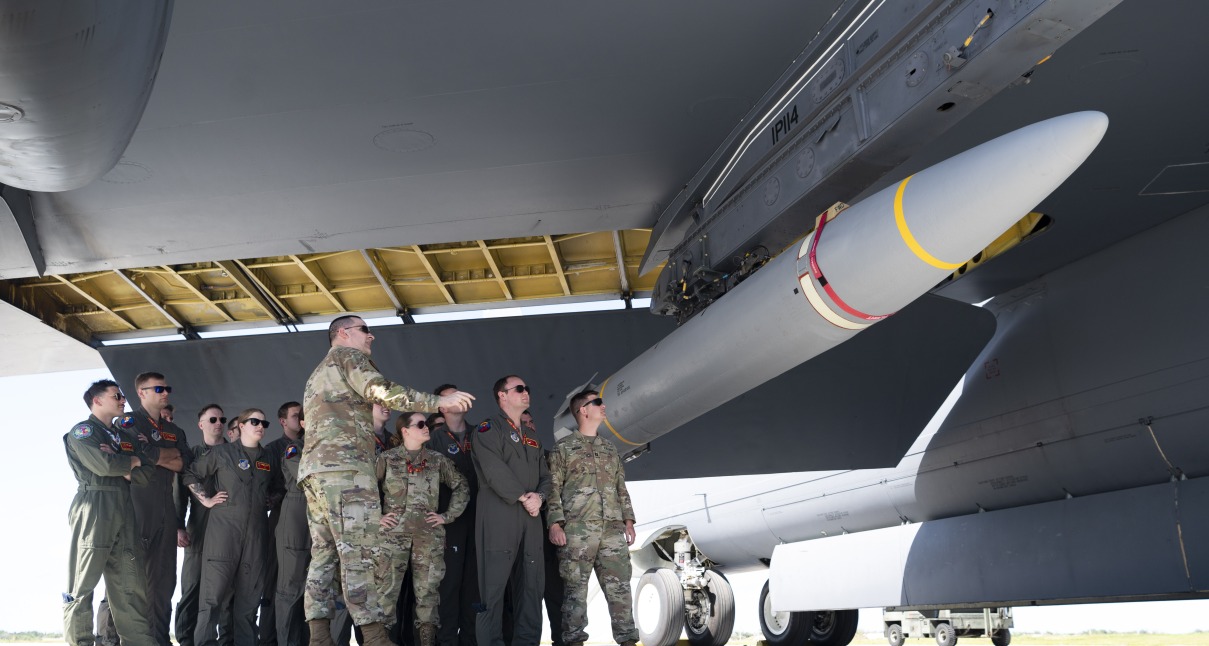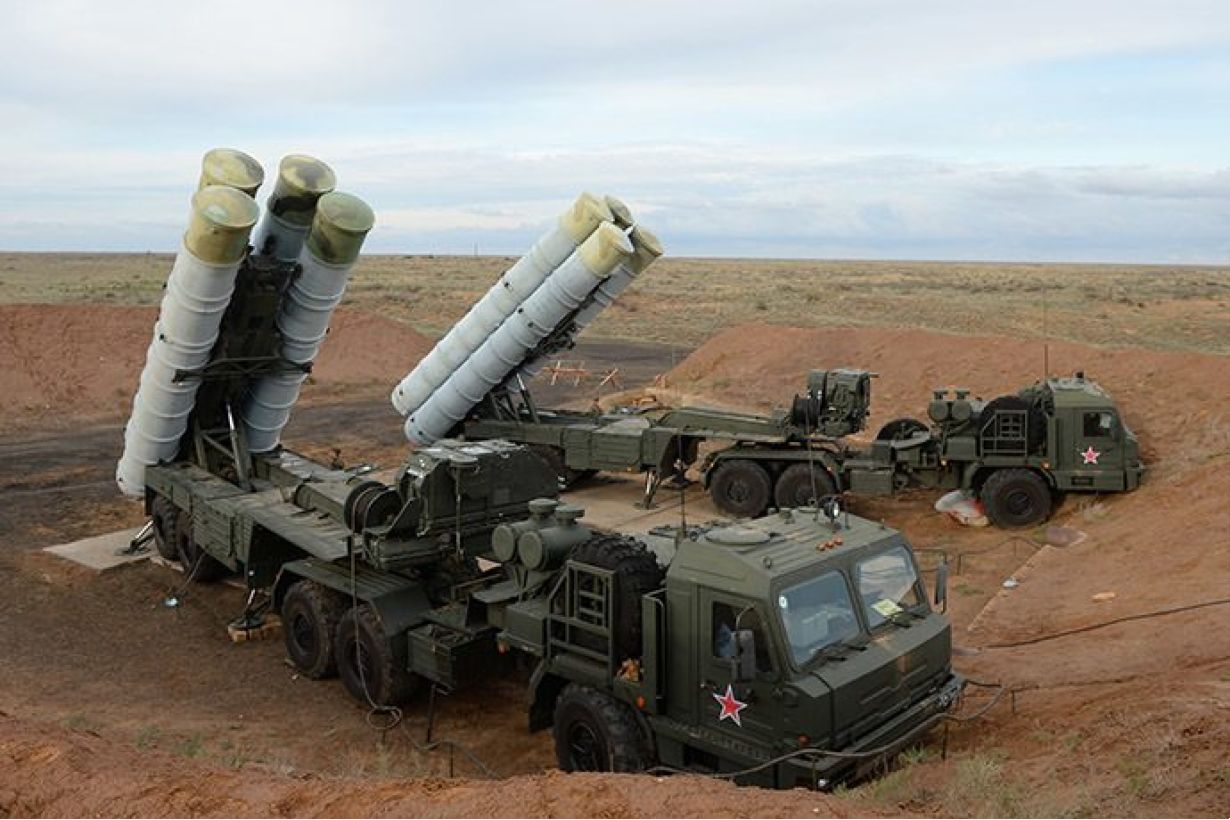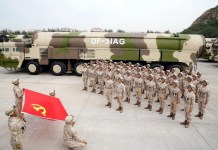The U.S. Army and Navy have successfully completed integrated testing of the Common Hypersonic Glide Body (CHGB), the Pentagon announced on December 12.
The Army plans to integrate its version of the system, the Long Range Hypersonic Weapon (LRHW), unofficially known as Dark Eagle, into a mobile land platform.
The Navy will integrate its version, called Conventional Prompt Strike (CPS), with the ability to be launched from ships and submarines.
The United States is actively developing non-nuclear offensive capabilities based on several maneuverable hypersonic weapon systems.
The U.S. Army LRHW is designed to strike targets at ranges up to 2,253 km with high precision and speed.
The U.S. Navy CPS system is intended to be launched from submarines and surface ships like the Zumwalt-class destroyers by 2025 and Virginia-class submarines by 2028. This initiative aims to provide long-range, rapid strike capabilities.
The Air Force is developing the AGM-183 Air-launched Rapid Response Weapon (ARRW), which is expected to reach speeds up to Mach 20 with a range of 925 km. This missile would be deployed from strategic bombers and multi-role fighters.
Another Country With Nukes? As Trump Renews His “Love Affair” With Kim, Will South Korea Go Nuclear?

Threat To Russia
These weapons are intended to provide the U.S. with the capability to bypass or overwhelm Russian anti-access/area denial (A2/AD) defenses.
Russia is concerned over the potential of American hypersonics to render existing missile defense systems obsolete. The unpredictable flight paths and extreme speeds of hypersonic weapons make them challenging to intercept with current Russian defenses, posing a significant threat to strategic assets.
The U.S. military’s advancement in hypersonic technology is aimed at enhancing its precision global strike capabilities.
Russian Countermoves
Russia has already developed two systems – the S-500 IADS and the Yenisei Radar system to counter the emerging threat from US hypersonic and space-based weapons.
S-500
The development of the S-500 system is among the top three defensive measures taken by Russia, as mentioned by the Chief of the General Staff of the Armed Forces of the Russian Federation, Valery Gerasimov, while briefing military attachés of foreign states on December 18.
“One Russian Aerospace Forces formation has been established to enhance the capabilities of the Russian Federation’s aerospace defense system. The formation of the first regiment equipped with the S-500 anti-aircraft missile system capable of strategic missile defense is nearing completion.”
The other two top defensive measures of the year mentioned by General Gerasimov were:
1. The establishment of Moscow and Leningrad Military Districts and raising two combined arms armies, an army corps, and 16 formations.
2. The establishment of a river flotilla and two formations, comprising 38 ships, combat boats, and support vessels, including a multi-purpose nuclear submarine and small missile ships, which are carriers of long-range precision weapons.

Understanding The Importance Of The S-500 System
The S-500 is not designed to replace the S-400, as many may believe. It was developed to fill a gap between the S-400 and the stationary A-135; the latter provides strategic defense for the Moscow Region against attack by intercontinental ballistic missiles (ICBM).
The S-500 has all the capabilities of the S-400, but it is honed for destroying a wide range of targets in near space.
Russia already has the S-400 system to defend against bombers, reconnaissance aircraft, or airborne command posts as far away as 400 km using the 40N6M missile.
The S-500 also has the 40N6M missile, but it stands out with its additional ability to intercept high-speed ballistic missiles or space-based threats using the new 77N6-N and the 77N6-N1 missiles.
The S-500 can easily be integrated into a unified air defense system. In the future, the S-500 will serve as the basis of a unified national air and missile defense formed to protect the Russian Federation.
The S-500 will consist of a combat command post with an automated control system (avtomatizirovannoy sistemy upravleniya—ASU), a radar complex, including a multifunctional “illumination” radar, and up to 12 anti-aircraft missile launchers mounted on a Russian- or Belarusian-built chassis.
Yenisei Radar
The Yenisei multi-band phased array (AESA) radar has been developed to augment the capabilities of the S-400 and S-500 systems against hypersonic targets and stealth aircraft. It is the successor to the 91N6E radar of the S-400 system.
The Yenisei radar can detect and track targets at extreme ranges, estimated to be over 600 kilometers, depending on the target’s size and altitude.
It can monitor objects in near-space and low-Earth orbit, making it ideal for countering ballistic and hypersonic threats.
Advanced algorithms and multiband operation allow the Yenisei to detect and track low-observable (stealth) aircraft and missiles.
The radar can track hundreds of targets simultaneously, ensuring effective threat evaluation and prioritization.
The target detection range of the Yenisei radar is marginally greater than the 91N6E, but significantly, the Yensei’s dual-band phased locator provides much better target discrimination, filtering out decoy deception tracks.
In addition to 360-degree surveillance capability, the radar has a stop and stare, sector view capability to detect even small-sized hypersonic targets.
The Yenisei additionally has a passive mode of operation for electronic eavesdropping or airspace surveillance. In the latter’s case, it can relay targeting data to cue the multifunctional radars of the S-400/S-500 systems for target engagement.
The Yenisei can also track its own air defense missiles after launch and accurately detect whether or not the target is hit.
Conclusion
Although the S-500 is likely to enter service this year, it will initially be used by specialist training units. Widespread operational deployment of the system is likely still several years away. However, it will occur before the US deploys its hypersonic weapon systems.
While the S-500 represents a formidable defensive capability against hypersonic threats, the Yenisei radar represents a technological leap in Russia’s radar capabilities, especially in addressing modern challenges such as stealth and hypersonic threats.
It enhances the effectiveness of Russia’s air defense systems and contributes to its strategic deterrence.
- Vijainder K Thakur is a retired IAF Jaguar pilot, author, software architect, entrepreneur, and military analyst.
- VIEWS PERSONAL OF THE AUTHOR
- Follow the author @vkthakur




